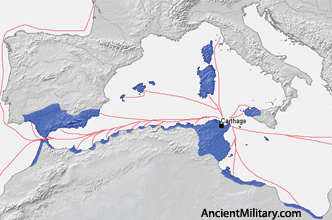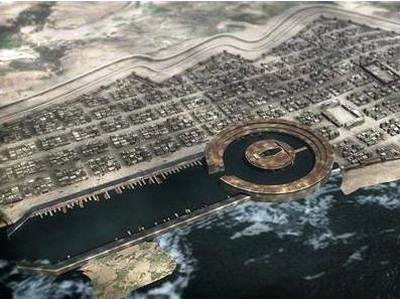Military Resource

Warfare,
Warriors & Empires
| Ancient Military | |
|
Ancient Empires
|
|
 |
||||||
Carthaginian Trade |
||||||
| The Carthaginians were the greatest trading nation of the ancient Mediterranean world, at least until the Romans destroyed them. They explored the Western Mediterranean in a time when the Greeks and many others were experiencing a dark ages. Carthage based their power on the profits they made from trade and developed an empire that would in time be able to go toe-to-toe with the Roman military. These profits were made in several key areas, and the crafty Carthaginian traders fought many battles and wars to keep rivals out. |
||||||
The Trading Empire of Ancient CarthageCarthage traded in all the typical ancient goods from olive oil to fish paste. Perhaps the most important area of Carthaginian trade was the Iberian Peninsula; it was from here that they acquired vast supplies of silver and copper. They used this silver to trade with their mother city, Tyre, and other Phoenician cities for goods that they would then trade around the Mediterranean. Another important source of income for the Carthaginians was tin. Tin was used to make bronze, and you can bet that bronze was important to the Bronze Age, and Carthage held a monopoly on the tin trade. Acquisition of tin wasn’t an easy task though; their two sources were the Canary Islands and the British Isles. Both of these sources were far from Carthage, in the Atlantic Ocean and had never been explored. |
||||||
The Carthaginian Harbor and Navy The Carthaginian navy was the nation's first line of defense. At its height Carthage had between 300-350 warships. These were mostly biremes and triremes, but included a few giant quadriremes and quinquiremes. When at the home port of Carthage the warships would be docked at the amazing circular inner war harbor of Carthage. The island in the middle of it had a palace for the head of the Carthaginian navy. The outer harbor was a port for the huge fleet of merchant ships that dominated trade across the Mediterranean. Both harbors could be blocked off by chains to prevent enemy ships from entering. The remains of the great Carthaginian Harbors can still be seen today. |
 |
|||||
Anceint Carthage, trade harbor and the inner military harbor. |
||||||